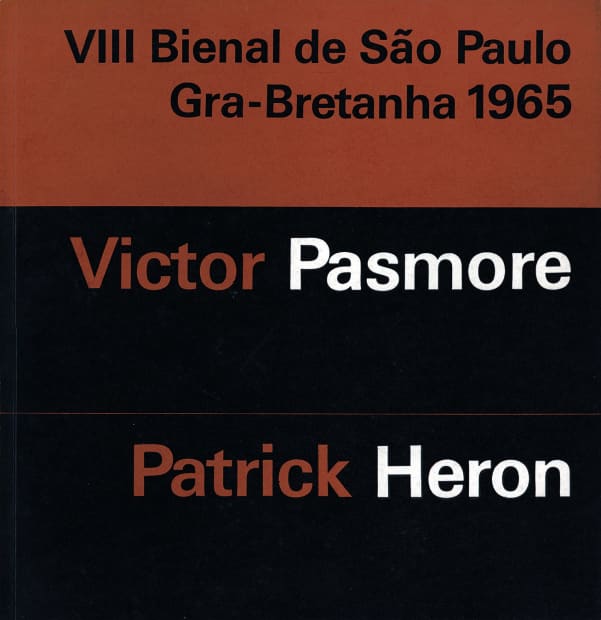-

This exhibition of work by Patrick Heron and Victor Pasmore celebrates sixty years since they both represented Britain at the VIII São Paulo Biennial in 1965. The Biennial was a significant event for both artists and, also more broadly, for Britain as a country in establishing itself as one of the primary players in the development of abstraction on the international stage. The selection brings together ten examples by each artist dating from the period 1952 to 1964. Many of the works were included in the original São Paulo show and together they give a sense of the scale and impact that the original display had on an audience largely unfamiliar with British Modernism.
-

-
-
I regard the relationship between painting, sculpture and architecture, considered as a synthesis, as being of two kinds. That of free forms functioning as complimentary and activating forces. That of complete integration whereby all three factors abandon their particular identity and unite as a single operation.
Victor Pasmore, 1957
-
-
Colour is both the subject and the means; the form and the content; the image and the meaning, in my paintings today.
Patrick Heron, 1962
-

-
On display in the exhibition, Brown Development No. 3 (above) belongs to a series of large relief paintings made by Pasmore in the early 60s. The first work in the series, Brown Development No. 1, is now in the collection of the Museum Boijmans Van Beuningen in Rotterdam. The series brings together the key principles of purity, form and the aesthetic potential of materials and mathematical systems which Pasmore focused upon during this key time in his career. The works combine the abstracted organic forms of the artist's late figurative work, the formal elements of his earlier collages, and the constructed, crafted relief work which was in part inspired by the work of his close friend Ben Nicholson. Brown Development No. 3 is an important work not only chosen to be included in the British Pavilion at São Paulo, but also in Pasmore's major 1965 retrospective at the Tate Gallery.
-
Heron’s paintings included in the 1965 Biennial spanned a short but intense period of work dating from around 1962 to 1964 and made up the second display of his work in South America ever. Flooded with expansive areas of intense colour which toy with the eye’s comprehension of space, these works, including Two Vermilions, Orange and Red: September 1964 (above) served to consolidate his reputation as a painter of equal significance to his American contemporaries in New York at the time. By 1963 Heron’s approach to abstraction had diverged from his early 60s pictures, characterised by their softer-edged forms and thinly applied layers of colour. His concern by this point had instead turned to the relationship between shapes of colour separated by more distinct divisions.
-
Hazlitt Holland-Hibbert & FRANKIE ROSSI ART
Thursday 7 November 2024 – Friday 31 January 2025
(Closed 21 December - 5 January 2025)
Opening hours
Mon – Fri 10:00 – 18:00
Saturdays 11:00 – 17:00
Closed Bank holidays38 Bury Street
St James's
SW1Y 6BB
7 November 2024 - 31 January 2025



























